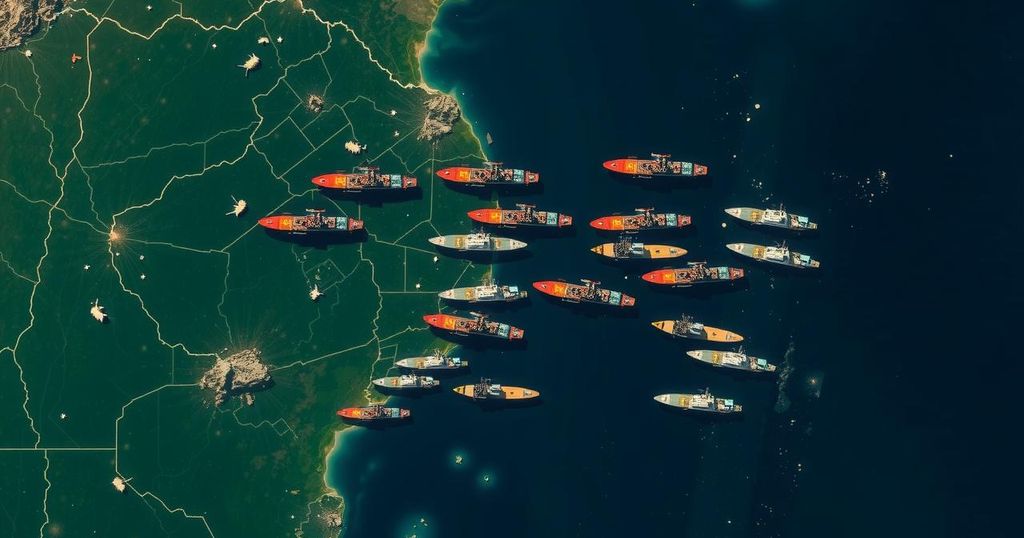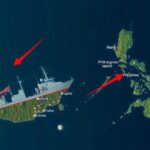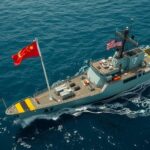Satellite Images Reveal Chinese Vessel Swarm Near Thitu Island
Satellite images revealed approximately 100 Chinese vessels near Thitu Island in the South China Sea, intensifying territorial tensions between China and the Philippines. The presence of these ships, including those potentially operating without transponders, points to aggressive maritime strategies employed by China amid a backdrop of diplomatic protests and escalated confrontations with Philippine forces.
Recent satellite imagery has depicted a significant formation of nearly 100 Chinese vessels in close proximity to Thitu Island, which is also known as Pag-Asa in the Philippines and Zhongye Island in China, situated within the contentious South China Sea. Ray Powell, director of Stanford University’s Sealight program, reported on social media that the images taken by a European Space Agency satellite reveal at least 73 to 75 ships clustered a mere 2.5 to 5.5 nautical miles from the island, which lies within its designated territorial waters. Notably, subsequent observations identified 83 distinct vessels, with the possibility of additional ships operating nearby without their transponders activated, a common practice among China’s maritime militia.
This growing naval presence reflects the escalating territorial disputes in the region, particularly between China and the Philippines, with various nations—including Vietnam and Malaysia—asserting claims over the South China Sea. The situation has been exacerbated by aggressive maneuvers from Chinese forces, including blockades and confrontations that hinder Philippine supply missions. The Philippines, in response, has taken legislative steps to reinforce its maritime claims, provoking swift condemnation from Beijing.
The South China Sea is a highly contested region, with numerous countries claiming sovereignty over various features and resources. Thitu Island, the only feature with a permanent civilian population among the Spratly Islands, represents a focal point in the territorial tensions between China and the Philippines. China’s assertive maritime strategies, often deployed by its maritime militia under the guise of civilian operations, have drawn international scrutiny, particularly following a 2016 arbitration ruling that deemed China’s extensive claims as illegitimate. Furthermore, the geopolitical dynamics have been influenced by U.S. support for the Philippines as a defense treaty ally, heightening tensions in the region.
In summary, the recent sightings of a large number of Chinese vessels near Thitu Island signify a potential escalation in territorial disputes within the South China Sea. The Philippines has responded with legislative measures aimed at clarifying its maritime claims, while diplomatic tensions with China continue to rise. This ongoing situation underscores the complex interplay of regional sovereignty issues, security concerns, and international relations involving multiple stakeholders.
Original Source: www.newsweek.com








Post Comment